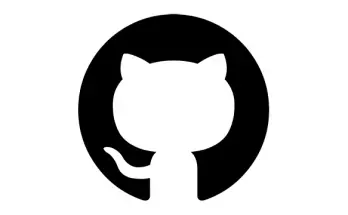Table of Contents
Manual incident response processes require doing the same set of tasks every time an incident appears. These manual processes involve multiple tools and team members.
Let’s say you need to update the firewall settings to block a malicious IP. This process starts with opening a ticket for the team responsible for the firewall. Then, the firewall team prioritizes its tasks over that of the malicious IP. As a result, no one is responding to the malicious IP event. Security teams cannot waste any time when such an incident occurs.
Security teams can save time and eliminate repetitive and simple tasks by using automated and orchestrated incident response systems. Security organizations of every size should consider how the right orchestration solutions can help them respond to incidents quickly and efficiently. Read on to learn what security orchestration is and how it can accelerate your response times.
What Is Incident Response Orchestration and Automation?
Incident response orchestration and automation is a cybersecurity solution designed to collect data about security threats and automatically send alerts to multiple sources. It automatically identifies and prioritizes security risks and respond to low-level security events.
However, security teams should avoid complete automation for some scenarios, since certain elements in the incident response require human intervention. Security orchestration should integrate processes, people and technology in the most effective way.
Any incident response technology should support the efforts of human security analysts, helping them respond to threats quickly and efficiently. Before introducing new tools into your ecosystem, assess your incident response strategy.
Benefits of Incident Response Orchestration
Here are some benefits that you will definitely get with a proper incident response orchestration:
#1. Security alerts prioritization
Automatic incident prioritization eliminates the need to research each alert individually. As a result, security teams can focus their efforts entirely on dealing with threats.
#2. Threat investigation
Understanding the full picture is one of the biggest challenges when investigating incidents. Some incident response solutions enhance forensic investigation by analyzing events from multiple data sources.
#3. Automated response
Automated incident response actions, like isolation or system shut-down, can help you avoid malware infection and other threats. Make sure to choose a security orchestration solution that gives you control over what you want to automate. It will allow you to adjust them to fit your organization’s needs and infrastructure
#4. Threat intelligence
Threat intelligence provides you with the necessary intel needed to make informed decisions about your security. This knowledge includes context and actionable advice about emerging or existing threats.
Incident response strategies must adapt to the constant changes in the threat landscape to provide the optimal response. Therefore, effective digital forensics and threat detection requires actionable threat intelligence updates.
#5. Improves security operations center management
Automated incident response platforms are designed with SOCs in mind. This is why the systems offer controls that enable teams to prioritize and optimize threat detection. In addition, your organization can maintain improved regulatory compliance using standardized and orchestrated processes.
Examples of Incident Response Automation in Action
Here are some common, yet non-exhaustive examples, of typical incidents that you might be able to mitigate with a response automation plan.
Malicious IP address
Firewalls filter your network traffic to protect you from attacks. However, firewall rules are rarely updated and they are not integrated with other security tools. As a result, firewalls may not detect the latest threats.
When you interact with a malicious IP address, you have to block it by updating your firewall. This procedure usually involves detecting the incident with other tools, prioritizing events, and manually updating the antivirus software. At some large enterprises, you need to open a ticket for other teams to take action. All of these processes slow down the response time.
Incident response automation enables you to block malicious IP addresses by automatically updating the firewall settings. Security automation and orchestration tools can detect malicious traffic to and from external IPs using threat intelligence.
Malware infection
Manual malware infection investigation includes researching the threat, identifying the infected systems, gathering event logs and more. Typical security solutions generate many false positives. As a result, you might not realize you are under attack until it’s too late.
You can prevent the malware from spreading much faster by automating actions like forensic data gathering, shutting down networks on infected systems, and running automated vulnerability scans.
Ransomware attacks
Emerging new ransomware attacks can cause substantial damage to any organization. That means you need to constantly learn about new ransomware and how to protect your systems. Manual security practices usually do not provide full visibility of your infrastructure. This leads to significant challenges when securing your organization from ransomware.
Automated security solutions incorporate actionable threat intelligence updates into your incident response plan. As a result, you can schedule automated vulnerability scans and limit the exposure to emerging ransomware.
Data breach
Data breaches require an immediate response. However, the process usually involves manual and repetitive actions like investigating events and logs in each system to figure out how the breach occurred. Automated security solutions with log management capabilities enable you to examine relevant events and alarms instead of dealing with them manually.
Keep track of incident response activities
Incident response often involves the coordination of multiple security tasks. Keeping track of these tasks is challenging. It is easy to focus on the wrong tasks or lose track of key priorities when there is no way to track incident response activities. For instance, two team members can work on the same issue without ever knowing they are doing it. Fortunately, some orchestrated incident response tools can keep track of your team’s efforts.
Conclusion
According to the SANS Incident Response survey, 47% of organizations spend more than 24 hours moving from detection to containment. The clock is ticking from the moment a security incident occurs within one of your environments.
The security of your organization is greatly impacted by the speed of your response. There’s a wide range of paid and open source solutions that can fit a wide range of budgets. Assess your current processes, and, if needed, introduce security orchestration tools that enable quicker response time.



